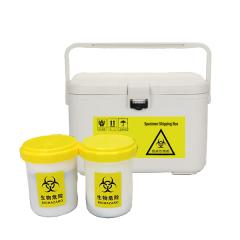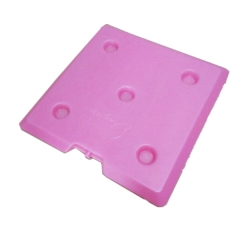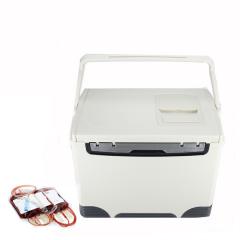Have you ever wondered how the frozen food you buy at the grocery store gets from its source to your table? It doesn’t move through an ordinary supply chain, in fact, it moves through what is known as a cold chain. In this article we are going to define what cold chain logistics is, what types of goods are shipped through it, and what types of equipment are used in the shipping process.
What is cold chain logistics? A cold chain is a supply chain consisting of perishable, temperature sensitive goods, requiring specialized equipment that can maintain specific temperatures from supplier to consumer.
What goods are shipped through cold chains? Items shipped through cold chains include foods such as produce, meat, seafood, and dairy goods; other items commonly shipped through cold chains include pharmaceuticals and some beverages. These types of goods require specialized packaging that maintain a specific temperature range while in transit, cold storage warehousing along the way, and specialized trailers and shipping containers equipped with refrigeration units typically referred to as “reefers”. If any one of these components fails, the shipment fails, and the product will spoil having a ripple effect of costly consequences for the carrier, supplier, and buyer or end consumer.
What types of equipment are used in cold chains? In the previous section we mentioned the need for cold storage warehousing and reefer equipped trailers and shipping containers. Perhaps one of the most crucial components of a cold chain is how the product is containerized/packaged for transit. Depending on the product and the temperature requirements to prevent spoilage, different containers will be utilized. There are two main types of containers commonly used: passive cool containers and active cool containers.
Passive cool containers rely on dry ice and other cooling materials to keep the internal temperature of the container at the desired temp. Active cool containers have technology implemented that can monitor and control the internal temperature employing powered refrigeration systems that automatically maintain the desired temp. Active cooling containers are more costly but are generally more reliable at maintaining a desired temperature for a longer period. Depending on the product being shipped, either option is suitable. However, for more temperature sensitive goods such as pharmaceuticals, active cool containers are usually the best option to prevent costly spoilage.
Another important component in cold chains is reliable shipment tracking data and perhaps even more crucially, on time performance. Unlike typical shipments, cold chain shipments only have so much time in transit before the shipment spoils making accurate shipment tracking data incredibly important for all parties involved. Due to the necessity of accurate tracking data, shipping containers coming from overseas via steamship are often equipped with GPS trackers ensuring accurate tracking data.
Cold chains are not something we think about often or notice but are a crucial component in our food supply chains. Whether it’s a sushi restaurant in California ordering fish from Japan, or a winery in France exporting fine bottles of wine, both of their goods will move through a cold chain to ensure optimal freshness all the way to your table.


 italiano
italiano  English
English français
français русский
русский español
español português
português العربية
العربية 日本語
日本語 한국의
한국의 magyar
magyar










